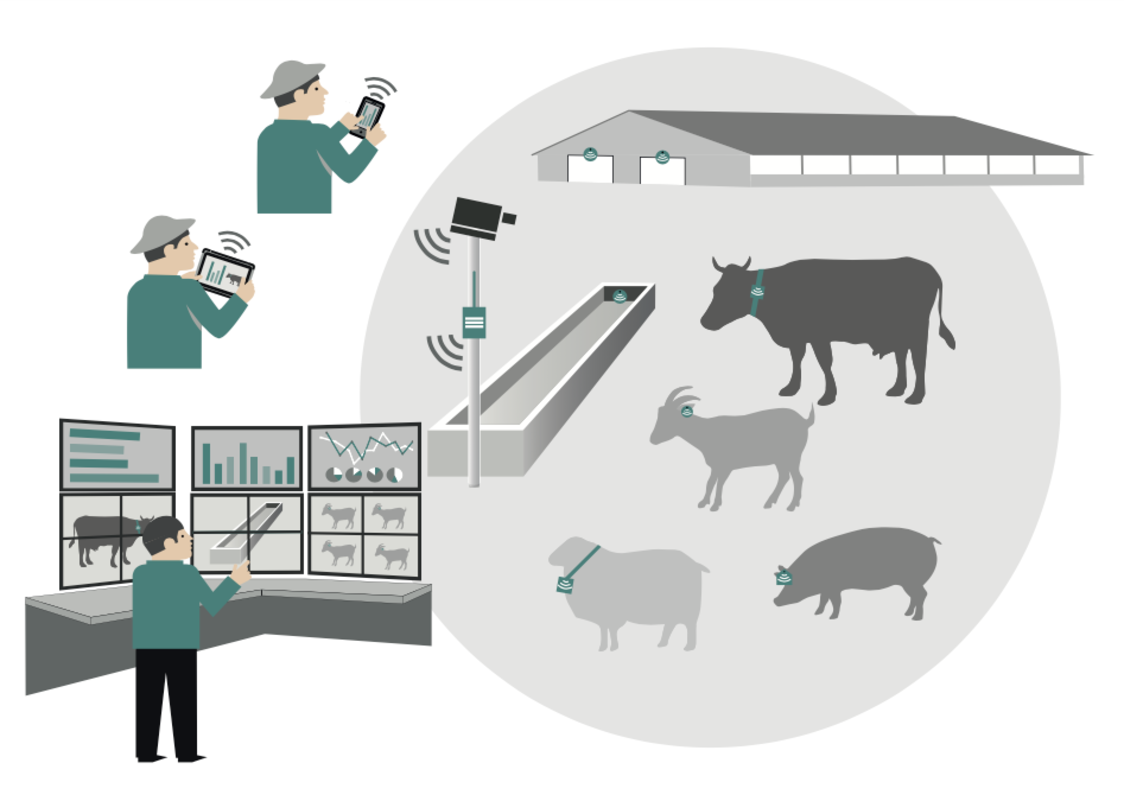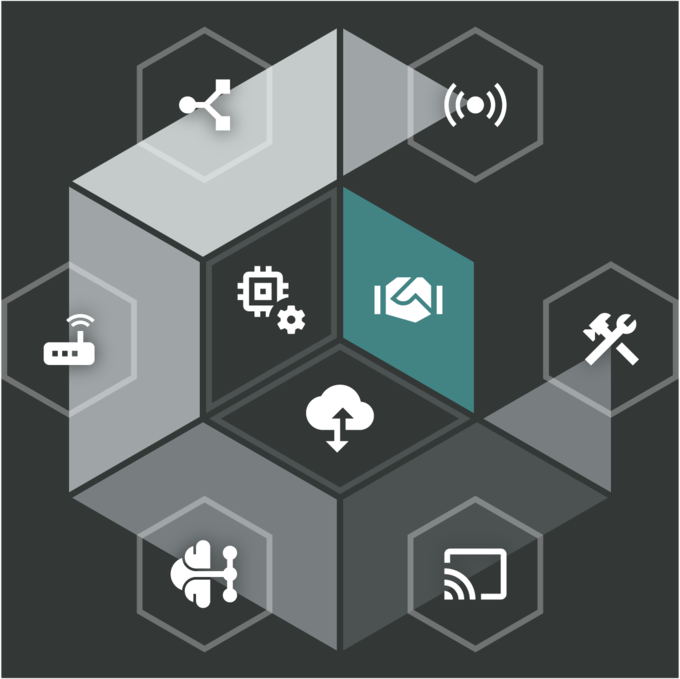The challenge
In the field of livestock production, e.g. in the keeping of dairy cattle, herd management systems are used to manage the animal population and to control or optimise the processes in the production operation. While the identity of the animals and the feed delivery are already recorded electronically, the detection of abnormalities in development or behaviour requires the observation skills of experienced animal keepers. An automated 24/7 monitoring of each individual animal and all environmental parameters is desirable without installing a complex and personnel-intensive IT structure in the breeding operation.

The result:
The combination of cloud-based herd management and the use of Smart-Sensor transponders on the collar of the farm animals makes it possible to easily digitalise the barn via IIoT solution without the need for IT knowledge on the part of the breeding company. The data generated will not only be used to manage the animal population and control processes, but also to optimise housing conditions and monitor the health status of each animal in a herd. There are also user benefits outside of the livestock farm, e.g. when selected long-term data is made available to feed manufacturers or research institutions.
